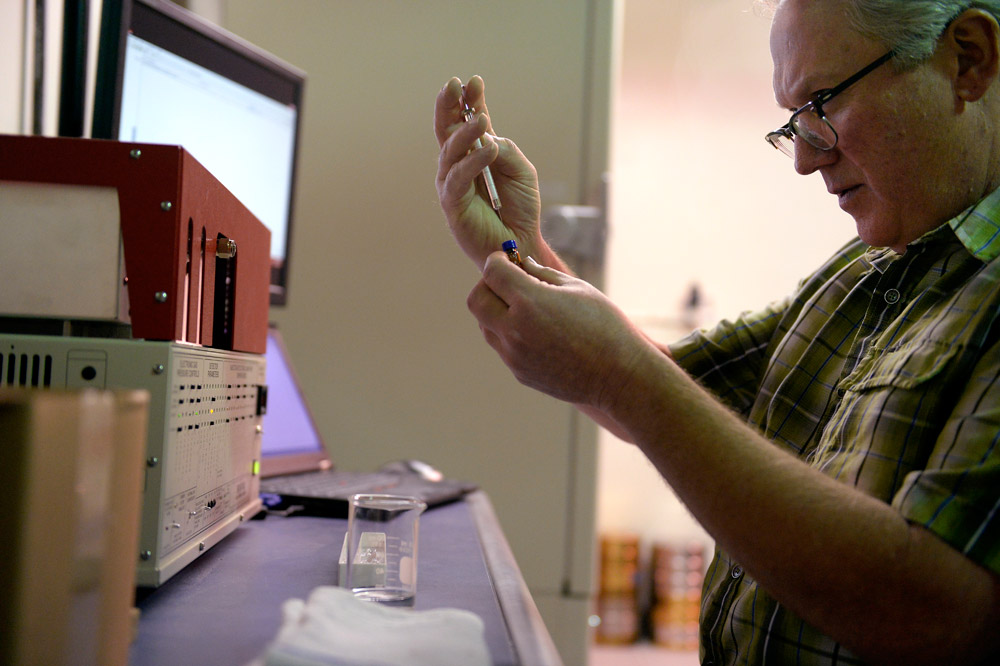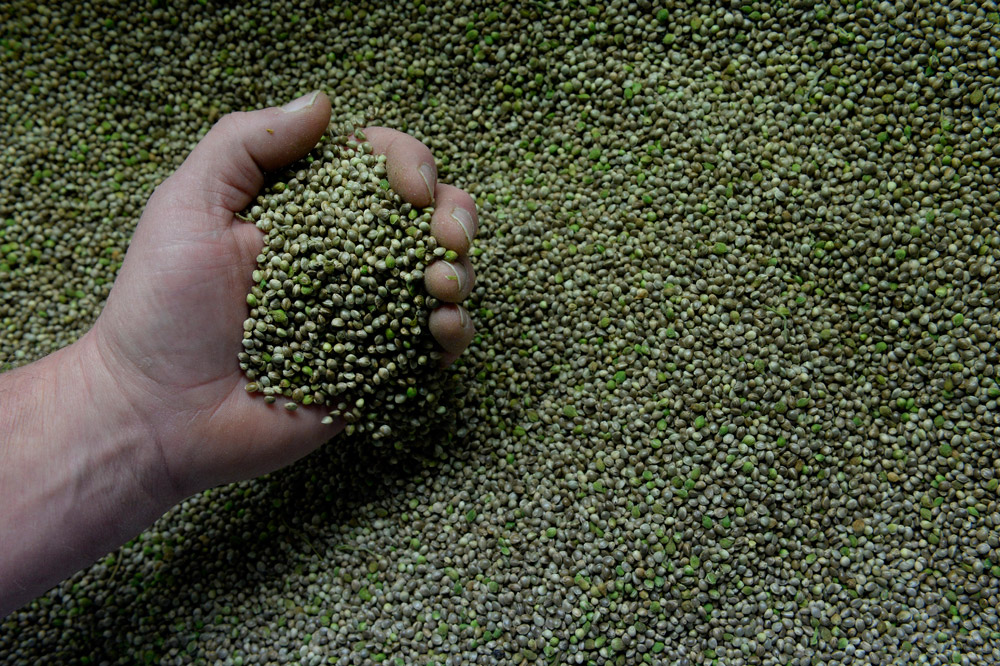Ben Holmes gently lowers the turntable needle onto the album, and Traffic’s “Medicated Goo,” begins to play.
Steve Winwood’s wistful tenor sweeps through the Centennial Seeds laboratory: “My own homegrown recipe’ll see you through.”
“Everyone stole from Stevie Winwood,” Holmes says, his foot tapping as he injects a syringe of dark, syrupy liquid into his gas chromatograph.
No one is stealing from Holmes, a self-taught scientist, engineer, farmer and cannabis seed geek who next month will take a rare step to apply for a patent on a laboriously created cannabis superstrain.

If it is awarded, the U.S. patent on Holmes’ medical-grade Otto II strain will be the first to protect a cannabis plant and a first step in establishing plant-breeder rights for growers who only a few years ago were considered criminals.
“This industry came up in stealth, born in basements and crawl spaces,” Holmes said. “But now, with companies forming and making larger investments, the desire to protect intellectual property is becoming paramount. Bleeding-edge stuff, right here.”
Indeed. Gone are the days when pie-eyed longhairs haphazardly hurled pollen into jungles of pot plants, hoping to meld two strains.
Today’s top breeders are geneticists, taking years to weed through carefully engineered generations of cannabis to elevate the most desired traits.
Some of these new superstrains are high in cannabidiol, or CBD, one of several dozen cannabinoid chemical compounds in cannabis and the plant’s major non-psychoactive ingredient. CBD has been credited with relieving some epileptic seizures, prompting widespread calls for additional research.
Other more utilitarian superstrains are resistant to mites or the crop-killing powdery mildew that plagues grow operations across Colorado.
Some superstrains are simply super stony, with sky-high levels of tetrahydrocannabinol, or THC, the psychoactive compound in cannabis.
Coming Sunday: Pick up a Denver Post on Dec. 28 for our 24-page special report A Year Of Legal Pot, dissecting Colorado’s first year of legal recreational marijuana sales.
Year in review:
Special report from The Cannabist
Portable vaporizers: The 12 vape pens that caught our attention
Cannabis in the kitchen: Our top infused recipes, from pot brownies to mac and cheese
Essential reading: Whoopi, Dr. Drew and 13 other pot op-eds that defined the year

The gas chromatograph is Holmes’ key tool in shaping Otto II, a high-CBD, low-THC strain he hopes can fuel medical therapies. The 50-year-old gizmo separates molecules and converts them into an electrical impulse. A green line tracking across a screen reveals the level of THC in the substance. That line will be the baseline for a measurement of Otto II.
Holmes produces a well-worn legal tablet laden with acronyms and millivolt values from the gas chromatograph. Those figures reveal his painstaking progress toward breeding the THC out of, and the CBD into, his treasured varietal.
It is, in many ways, the result of a lifelong career dedicated to breeding, growing, cloning, engineering and charting the most useful cannabis plants.
As Winwood sings the oft-covered “Dear Mr. Fantasy,” Holmes shares his plans to protect Otto II, which ranks among the most valuable of his collection of 400 varieties of cannabis seeds, both marijuana and hemp, most of which are stored in an industrial freezer in his Lafayette lab. In addition to the patent, he hopes to be the first cannabis breeder to secure protection under the Plant Variety Protection Act, the seminal plant breeders’ rights legislation from 1970.
“The value of that seed, long-term, could be very, very valuable — an annuity,” said Holmes, a father of two who serves on the state’s Industrial Hemp Advisory Committee and is collaborating on the University of Colorado’s groundbreaking Cannabis Genomic Research Initiative.
“Everyone who does this wants to produce something with durability,” he said. “A seed with good utility that produces well can have longevity for generations.”
Holmes is a sort of modern-day Luther Burbank, the pioneering American botanist and horticulturist who developed more than 800 varieties and strains of plants in the late 1800s and early 1900s. Burbank faced intellectual property challenges in his career, as he created still-heralded peaches, plums, daisies and the world-dominant Burbank russet potato.
Holmes follows Burbank’s lead, offering a few types of seeds to a single, large distributor who can flood the market in the first year, before anyone can take it as their own by cloning the young seedlings.
By the time the copycats have cloned Holmes’ strains, he already has made his money. He also licenses the use of his heirloom seeds, but not the extra-special seeds he doesn’t want copied.
“Really the focus, minus any patent protection, is on licensing and careful selection of distributors,” Holmes said.
State trademark protection can safeguard the name of an innovation within a state’s borders. But protecting intellectual property through state laws is a bandage.
Patents are exclusively federal. Marijuana is illegal under federal law. And federal law trumps state law.
